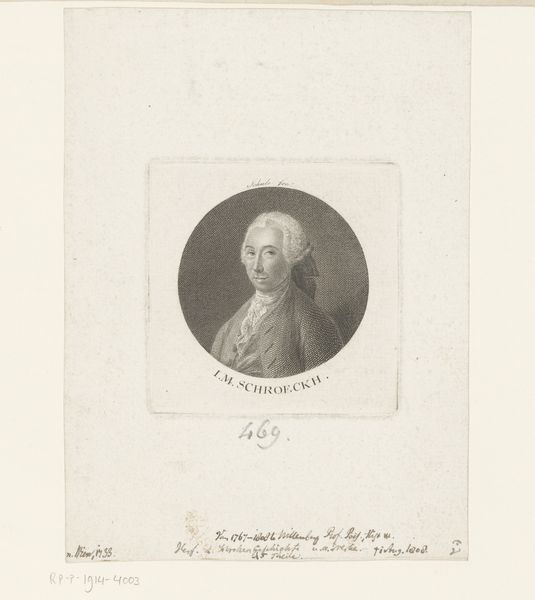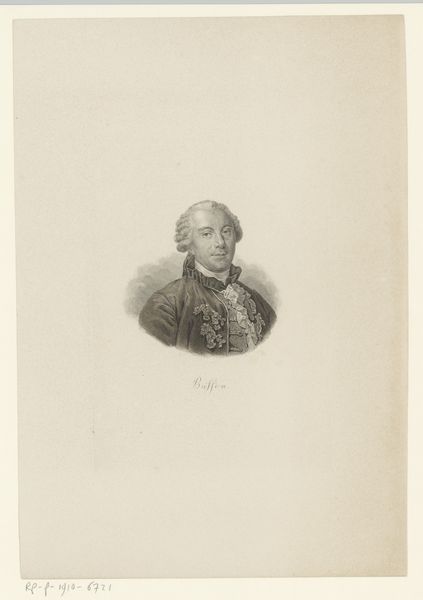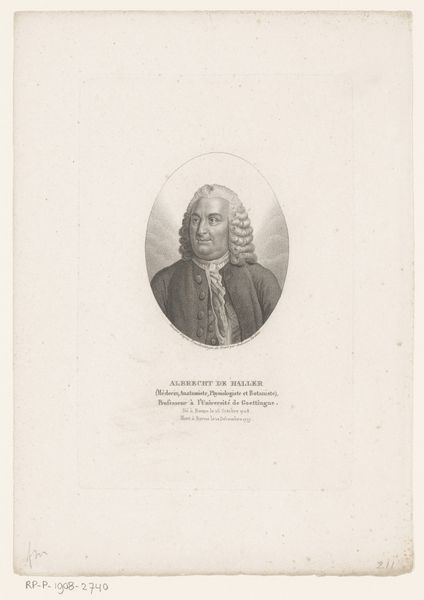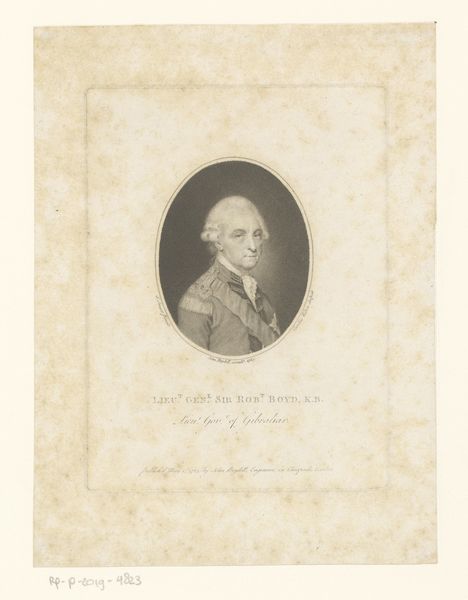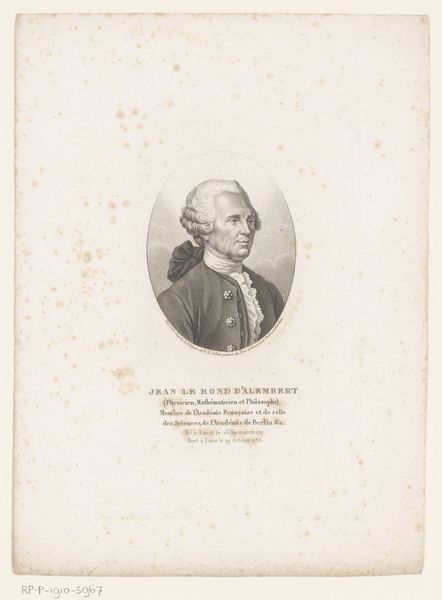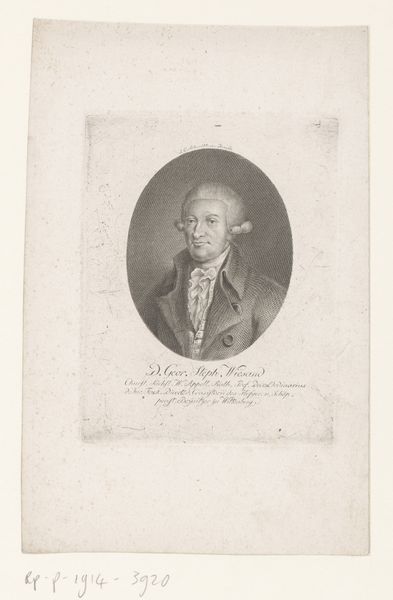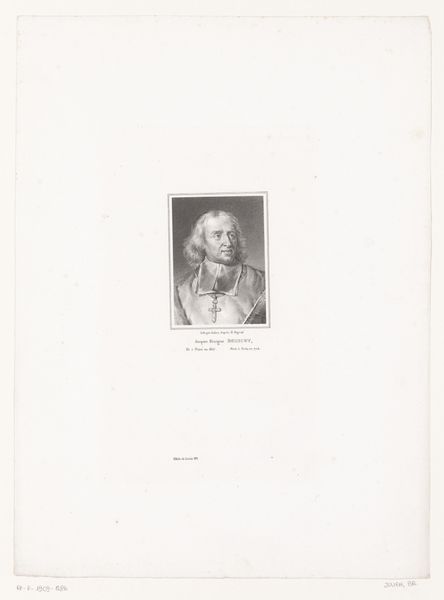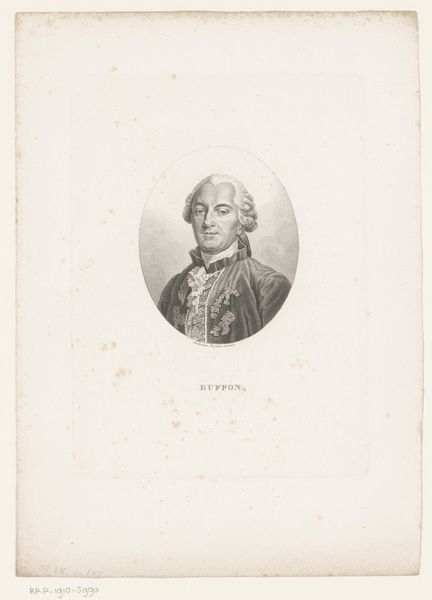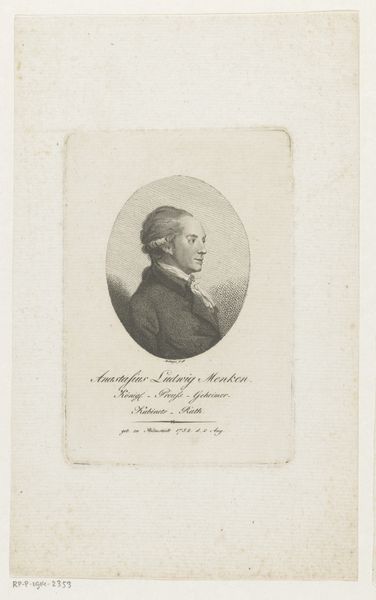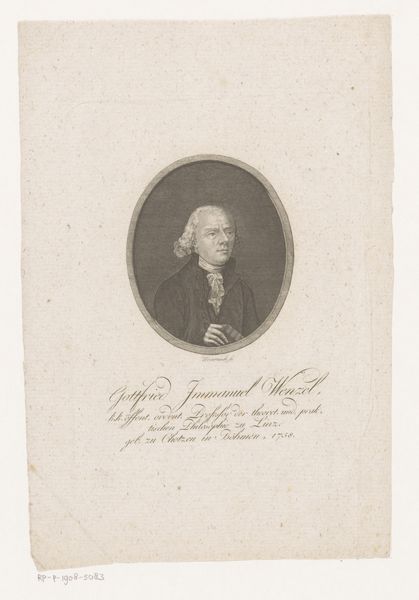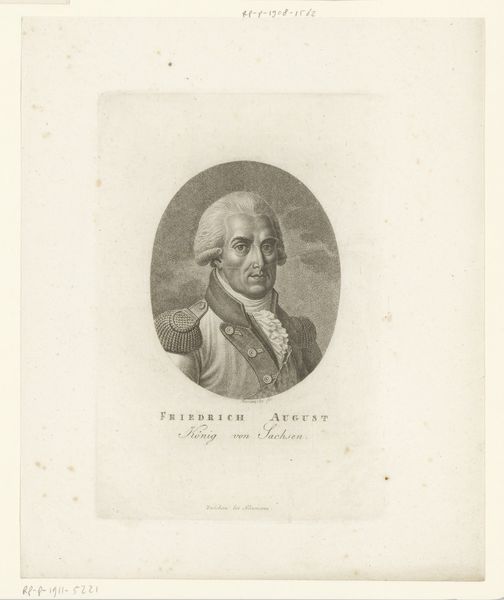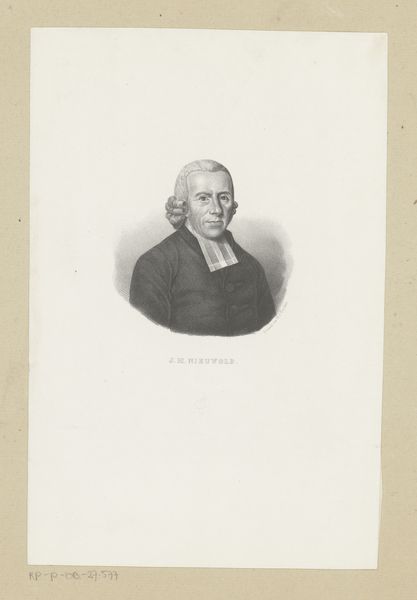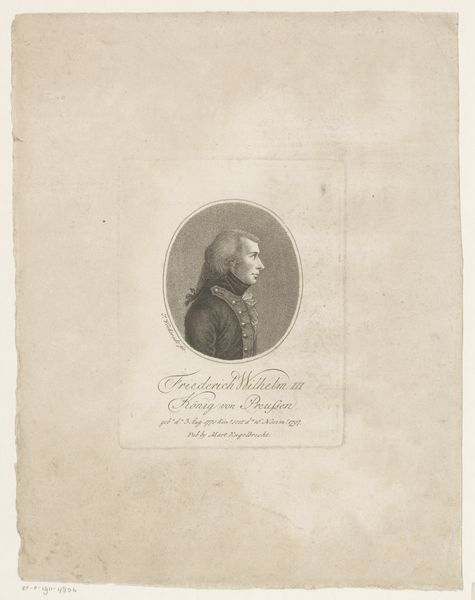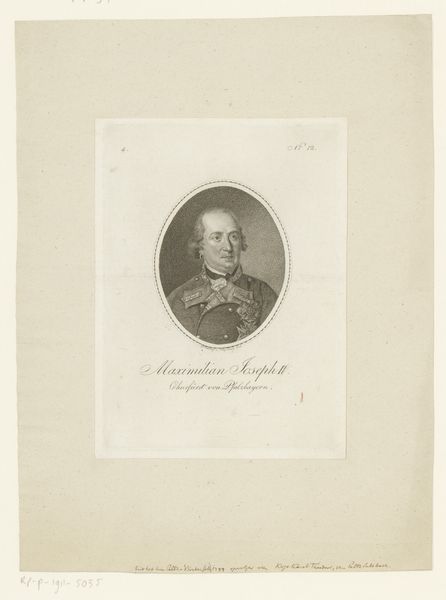
print, engraving
#
portrait
#
pencil drawn
#
neoclacissism
# print
#
pencil drawing
#
history-painting
#
engraving
Dimensions: height 181 mm, width 128 mm
Copyright: Rijks Museum: Open Domain
Carl Mayer created this print of Friedrich von Schiller, the famous German poet, playwright, philosopher, and historian, using the technique of lithography. Lithography involves drawing on a flat stone or metal plate with a greasy crayon, then applying ink, which adheres only to the drawn areas. This image was then transferred onto paper. The material qualities of the stone and the greasy crayon allow for a wide range of tonal variations, visible in the subtle gradations of shading that describe Schiller's features and clothing. Lithography was a relatively new technology at the time, offering a more direct and expressive means of printmaking than traditional engraving methods. Prints like this democratized images, making them more affordable and accessible to a wider audience. Lithography, with its relative ease and speed, facilitated the mass production of images and satisfied the growing demand for portraiture. This print therefore reflects the burgeoning culture of celebrity and the rise of visual media in the 19th century. Understanding the materials and processes behind this image allows us to see it not just as a portrait, but also as a product of its time, shaped by technological innovation, and shifting social values.
Comments
No comments
Be the first to comment and join the conversation on the ultimate creative platform.
